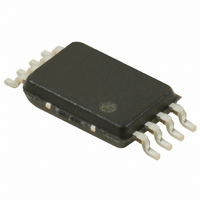S-8232AYFT-T2-G Seiko Instruments, S-8232AYFT-T2-G Datasheet - Page 15

S-8232AYFT-T2-G
Manufacturer Part Number
S-8232AYFT-T2-G
Description
IC LI-ION BATT PROTECT 8-TSSOP
Manufacturer
Seiko Instruments
Datasheet
1.S-8232ABFT-T2-G.pdf
(28 pages)
Specifications of S-8232AYFT-T2-G
Function
Over/Under Voltage Protection
Battery Type
Lithium-Ion (Li-Ion), Lithium-Polymer (Li-Pol)
Voltage - Supply
2 V ~ 16 V
Operating Temperature
-40°C ~ 85°C
Mounting Type
Surface Mount
Package / Case
8-TSSOP
Output Voltage
4.3 V
Operating Supply Voltage
2 V to 16 V
Maximum Operating Temperature
+ 85 C
Minimum Operating Temperature
- 40 C
Mounting Style
SMD/SMT
Lead Free Status / RoHS Status
Lead free / RoHS Compliant
Delay Circuit
Rev6.0
0 V Battery Charging Function
0 V Battery Charge Inhibiting Function
*1. When connecting batteries for the first time, the IC may fail to enter the normal status (is not in the status to charge).
*2. In this product with “overcharge detection/release hysteresis”, “no final overcharge function”, and “0 V battery charge
*3. Some lithium ion batteries are not recommended to be recharged after having been completely discharged. Please
The overcharge detection delay time (t
detection delay time 1 (t
delay times are correlated as seen in the following ratio :
The delay times are calculated by the following equations : (Ta = − 40°C to + 85°C)
Remark The overcurrent detection delay time 2 is not set Overcurrent detection voltage 2 (V
This function is used to recharge both of two serially-connected batteries after they self-discharge to 0 V. When the 0
V charging start voltage (V
FET gate is fixed to V
When the voltage between the gate and the source of the charging FET becomes equal to or higher than the turn-on
voltage by the charger voltage, the charging FET turns on to start charging. At this time, the discharging FET turns
off and the charging current flows through the internal parasitic diode in the discharging FET. If all the battery
voltages become equal to or higher than the overdischarge release voltage (V
status.
This function is used for inhibiting charging after either of the connected batteries goes 0 V due to its self-discharge.
When the voltage of either of the connected batteries goes below the 0 V charge inhibit voltage 1 and 2 (V
charging FET gate is fixed to "EB−" to inhibit charging. Charging is possible only when the voltage of both connected
batteries goes 0 V charge inhibit voltage 1 and 2 (V
Note that charging may be possible when the total voltage of both connected batteries is less than the minimum value
(V
the 0 V charge inhibit voltage 1 and 2 (V
connected batteries reaches the minimum value (V
When using this optional function, a resistor of 4.7 MΩ is needed between the gate and the source of the charging
control FET (refer to Figure 8).
If so, once set the VM pin to VSS voltage (short between VM and VSS or connect a charger) to return to the normal
status.
inhibiting function” (indicated in *4, in “2. Product Name List” in “
other products do not have, is seen. But it does not affect on actual use.
In the normal status, the battery voltage is the overcharge release voltage (V
detection voltage (V
Usually the IC returns to the normal status by detaching the overload, but the charging FET may turn off and the IC
may go in the overcharge status. After that, connect the load again to start charging. The FET turns on and the IC
returns to the normal status (Refer to “Overcharge status”).
contact battery manufacturer when you select a 0 V battery charging function.
DSOPmin
Overcharge delay time : Overdischarge delay time : Overcurrent delay time = 100 : 10 : 1
Overcharge detection delay time t
Overdischarge detection delay time t
Overcurrent detection delay time t
_00
) of the operating voltage between VCC and VSS even if the voltage of either of the connected batteries is
CU1, 2
CC
IOV1
potential.
) or lower but after that, the IC goes in the overcurrent status by connecting an overload.
0CHA
) change with an external capacitor (C3). Since one capacitor determine each delay time,
) or higher is applied to between VM and VCC by connecting the charger, the charging
*3
BATTERY PROTECTION IC FOR 2-SERIAL-CELL PACK
CU
IOV1
CU1, 2
[s] = Delay factor
DD
[s] = Delay factor
Seiko Instruments Inc.
*3
[s] = Delay factor
0INH1, 2
), the overdischarge detection delay time (t
) or less. Charging is inhibited when the total voltage of both
DSOPmin
0INH1, 2
) or more.
) of the operating voltage between VCC and VSS.
Product Name Structure”), the following action,
( 2.500,
( 0.3045, 0.4545, 0.6409 ) × C3 [μF]
( 0.02864, 0.04545, 0.06682 ) × C3 [μF]
Min.,
CD1, 2
Typ.,
4.545,
DU1, 2
) or higher, and the overcharge
), the IC returns to the normal
DD1, 2
Max.
9.364 ) × C3 [μF]
IOV2
), and the overcurrent
S-8232 Series
).
0INH1, 2
), the
15

















